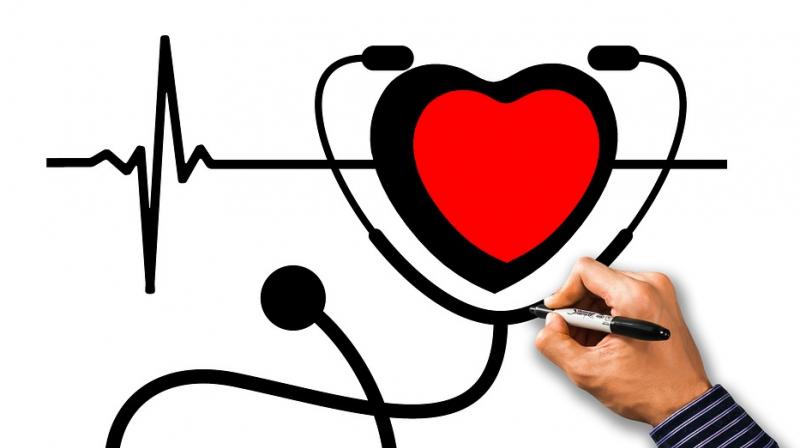The role of technology in transforming healthcare sector of India
India's expenditure on the health sector as a per cent of GDP has inched up just 20 basis points over the last four years.

Sometimes it’s better to let the numbers do the talking. 11,082, this is an average population treated by one allopathic doctor serving in the government across the country. As per the National Health Profile data, there is one government hospital bed per 1,844 individuals. Altogether, there are 10, 78,732 allopathic doctors registered with the State Medical Councils and Medical Council of India, as on 31st March, 2018. Now on a rough estimate, if only 4/5th of these registered practitioners are available, then approximately 8.63 lakh doctors will be actually accessible. The number is abysmally lower than World Health Organisation standards.
Here are some more pain points to the issue. India’s expenditure on the health sector as a per cent of GDP has inched up just 20 basis points over the last four years. It currently spends just 1.4 per cent of its GDP on health, one of the lowest proportions in the world. Moreover, the country ranks 145 on the healthcare access and quality index lagging way behind its BRICS peers.
Cutting to the chase, these numbers reflect India’s ailing healthcare system. What’s appalling for a country like India, which will continue to be the world’s fastest growing major economy, is its severe health crisis. Another challenge in this sector is the inaccessibility of healthcare information to citizens which widens the gaps in the healthcare scenario. Moreover, it’s hard to ignore our conventional healthcare structure with frequent piles of papers which can easily be misplaced, leading to medical errors due to loss of information
What is the remedy?
Technology will address the challenges of the traditional systems by streamlining the processes. The healthcare space sets an example of a sector enacting massive changes. Digitisation has penetrated to our daily lives and time is ripe to leverage technology that will create patient-centric healthcare systems that can improve response time, reduce human error and save costs. Technology is bridging the gap and altering the way doctors and patients interact with each other. This is nothing but a revolution the transformation healthcare services are witnessing today with advanced medical technology, improved and precision diagnostic and therapeutic tools.
The industry is getting a lot more organised and becoming more patient-centric. According to NASSCOM findings, the Indian healthcare IT market was about $ 1 billion in 2014 and is pegged to grow around 1.5x by 2020. Currently healthcare software market comprises of only 9 per cent of the total healthcare IT market in the country. This is not all; around 60 per cent of the health-tech focussed start-ups have incorporated over the last eight years.
How will technological intervention make the sector fitter?
By adopting digital technology and processes, healthcare providers can focus on improving the quality of patient care but this does not restrict to just adopting a new technology. There is a need to have a proper digital strategy and required IT infrastructure. Here are some ways technology could help us live healthier and more productive lives
EMR or the electronic medical records helps track patient health data and support medical decisions. And all thanks to the emerging cloud computing model which is helping in building a secured EMR in a cloud computing environment and is gaining traction too. Cloud computing concept is becoming a popular for facilitating EMR sharing and integration. But adopting such technology could be nerve-racking as it entails greater responsibility. Information security becomes an important issue when moving EMR to the cloud environment. Telemedicine is another exciting area with well-designed solutions to deliver timely and effective healthcare. Consultation through mobile devices using video, images, and audio channels can help patients to access good medical aid. A study by ASSOCHAM highlights India’s telemedicine market potential to cross $ 32 million mark by 2020 at a CAGR of over 20 per cent.
The future for telemedicine services in India looks strong on the back of growing popularity of mobile internet in the country. The number of mobile internet users increased by 17.22 per cent from December 2016 to reach 456 million users by December 2017. The number of mobile internet users in India was likely to reach 478 million by June according to a recent report.
Concepts like e-Diagnostics are also creating an accessible pool of data which would ensure more efficient service and reduce in the risk of medical errors. Predictive algorithms and big data analytics can help accurate diagnostics of patients.
Next comes in the evolution of bots as health assistants. Soon, voice bots will be assisting patients and connecting with the right doctor. Around 39 per cent of India’s online population is expected to use some kind of voice assistant by end of 2018, predicts Accenture Consultancy. The challenge, however, remains to make chatbot conversations more reasonable and prudent. Nevertheless, India is a country where people would prefer to talk rather chat.
Finally, the successful leveraging of artificial intelligence (AI) is vital to propel the healthcare sector. Tapping its vast potential for more personalised healthcare and patient – centric approach is its next course of evolution. It has the potential to address the ever growing healthcare demands of the population and make healthcare outreach affordable for masses.
-By Ashish Gupta- CEO, docprime.com and CTO, Policybazaar.com.

